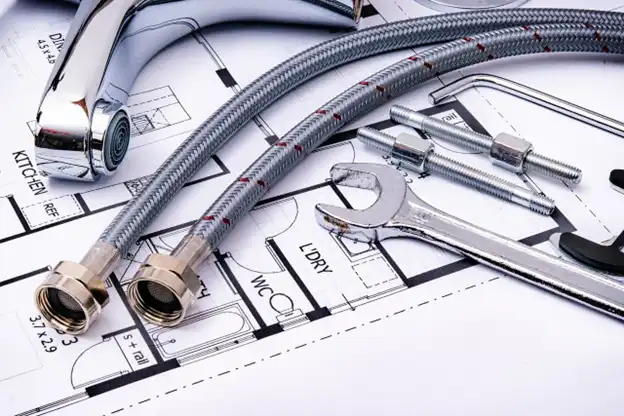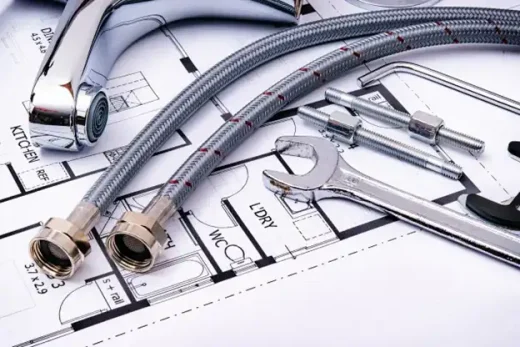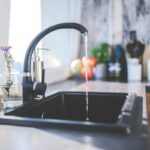Transforming plumbing infrastructure for architects, Home plumbers sustainable practices
Six Sustainable Practices for Architects Transforming Plumbing Infrastructure
20 September 2024
In this modern era, architects need to adopt sustainable practices to revolutionize plumbing infrastructure. As water scarcity and environmental concerns grow, they should embrace innovations like greywater systems and smart technology integration.
By exploring cutting-edge materials and water-efficient designs, architects can help to shape eco-friendly urban landscapes.
This shift toward sustainability not only conserves resources but also enhances building efficiency, setting a new standard for responsible construction in these modern times.
1. Integrating Greywater Systems for Efficient Reuse
Greywater systems capture and treat water from sinks, showers, and washing machines for reuse in irrigation or flushing toilets.
Architects can now incorporate these systems into both new builds and retrofits to enhance sustainability.
They work by filtering out particles before storing the treated water in tanks connected to plumbing networks. Some innovative designs even include sensors that monitor water quality and system performance in real-time, ensuring safe reuse.
Greywater integration reduces freshwater consumption significantly while also minimizing wastewater production.
As droughts become more frequent, these systems offer a practical solution for maintaining sustainable water use within urban environments.
2. Harnessing Rainwater Harvesting Techniques in Urban Areas
Rainwater harvesting involves collecting and storing rain from rooftops or other surfaces for future use.
In urban settings, architects incorporate systems like storage tanks and filtration units into building designs to efficiently manage water resources. This practice not only conserves water but also reduces stormwater runoff that can overwhelm drainage systems during heavy rains.
By utilizing collected rainwater for landscaping or non-potable uses within the building, architects create self-sustaining environments.
Innovative designs even integrate these systems with smart technologies that automate collection processes based on weather forecasts, maximizing efficiency while promoting eco-friendly practices in densely populated areas.
3. Innovative Pipe Materials for Enhanced Sustainability
Architects are now turning to new materials for plumbing pipes that improve sustainability and longevity.
Traditional PVC or copper options give way to alternatives like cross-linked polyethylene (PEX) or recycled metal alloys. These materials reduce environmental impact through lower energy consumption during production and increased durability. PEX, in particular, offers flexibility that minimizes installation waste and allows more efficient water flow.
Some innovative designs use bio-based resins as coatings, adding an extra layer of eco-friendliness while enhancing corrosion resistance.
By embracing these advanced materials, architects help reduce the carbon footprint of plumbing systems in modern constructions.
4. Smart Plumbing Solutions: IoT Integration in Water Management
IoT technology transforms traditional plumbing systems into intelligent networks, offering real-time monitoring and control.
With the assistance of a qualified plumber (someone who has completed a plumbing school program), architects can integrate smart sensors to track water usage, detect leaks, and regulate flow within buildings.
These systems send alerts for maintenance or abnormal patterns directly to facility managers’ devices, ensuring swift responses to potential issues.
Some setups use machine learning algorithms to predict future water needs based on historical data, optimizing resource allocation efficiently.
With these innovations, buildings will reduce waste and lower operational costs while improving sustainability efforts.
IoT-enhanced plumbing creates a seamless experience that benefits both occupants and the environment alike.
5. Designing Water-Efficient Fixtures to Conserve Resources
Architects increasingly specify water-efficient fixtures like low-flow faucets, dual-flush toilets, and aerated shower heads to reduce consumption. These fixtures maintain performance while significantly cutting down on water use.
Advanced designs even incorporate smart technology for precise flow control based on user behavior or occupancy patterns.
This approach not only conserves valuable resources but also reduces utility costs over time.
By prioritizing these sustainable options in both residential and commercial projects, architects play a vital role in fostering environmentally responsible practices. With every installation of these efficient systems, the impact on overall water conservation efforts becomes more pronounced across communities.
6. Implementing Green Roofs and Their Impact on Plumbing Needs
Lastly, green roofs serve as natural insulation and provide space for vegetation atop buildings, but they also influence plumbing design.
Architects incorporate drainage layers that manage excess water, ensuring structural integrity while supporting plant life.
These systems often connect to rainwater harvesting setups, capturing runoff for reuse in irrigation or non-potable applications. This reduces the demand for traditional plumbing infrastructure by decreasing stormwater load and promoting water recycling.
Additionally, green roofs can improve air quality and energy efficiency in urban settings.
Through the thoughtful integration of these living systems, architects can create multi-functional designs that effectively support sustainability goals.
Comments on this guide to Six Sustainable Practices for Architects Transforming Plumbing Infrastructure article are welcome.
Home Plumbers
Plumbers
Plumbing fixtures for bathroom and kitchen
Ultimate Guide to Bathroom Plumbing
How building codes influence plumbing systems
Blocked drains and plumbing issues in Portsmouth
Home Articles
Residential Architecture
Comments / photos for the Transforming plumbing infrastructure for architects guide page welcome.



